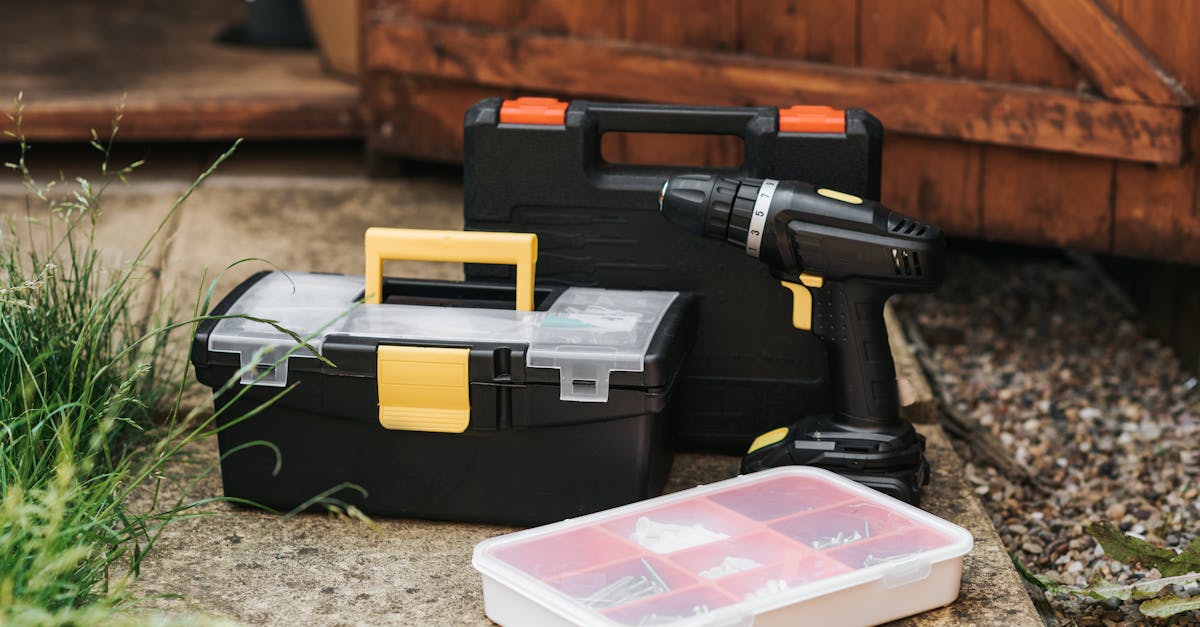
Table Of Contents
Setting Up Remote Controls
When it comes to Garage Door Opener Installation, setting up remote controls is a crucial step. To start, locate the "learn" button on your garage door opener motor unit, usually found near the antenna. Press this button until the LED light beside it turns on. This indicates that the opener is in programming mode and ready to sync with the remotes.
Next, press the button on your remote control that you wish to program. Hold it down until the opener's LED light blinks, signaling a successful pairing. Repeat this process for each remote control you have. Once all remotes are programmed, test them to ensure they operate the garage door opener smoothly. By following these simple steps, your remote controls will be synced and ready for use in no time during the Garage Door Opener Installation.
Program Remotes for Operation
To program remotes for operation during the Bunnings garage door opener installation process, start by locating the "Learn" button on the main unit. This button is typically found near the antenna wire. Press and hold the "Learn" button until the indicator light starts blinking rapidly. Once the indicator light is blinking, press the desired button on the remote control that you would like to program. The indicator light should then stop blinking, indicating that the remote has been successfully programmed. Repeat this step for each remote control you wish to connect to the garage door opener.
Ensure that all programmed remotes are functioning properly by testing them from various distances within your garage. It is important to confirm that each remote is able to successfully open and close the garage door without any delays or malfunctions. If you encounter any issues during this testing phase, double-check the programming steps to ensure accuracy. Additionally, be mindful of any interference that may affect the remote's signal strength and placement relative to the garage door opener.
Testing the Opener
Testing the garage door opener is a critical step in the Garage Door Opener Installation process. Once the installation is complete, the next stage involves ensuring that the opener functions correctly. Begin by testing the opener's operation by using the remote controls. Open and close the garage door several times to confirm that the opener responds appropriately to the commands. This step helps in verifying that the opener is connected and working correctly.
Following the initial test with the remote controls, proceed with conducting a safety reversal test. This involves placing an object, such as a block of wood, under the path of the closing garage door. When the door comes in contact with the object, it should automatically reverse back to the open position. This safety feature is crucial for preventing accidents and injuries, making sure that the garage door opener is functioning safely and effectively.
Perform Safety Reversal Test
Perform a safety reversal test as part of your Garage Door Opener Installation to ensure the system reacts appropriately in case of an obstruction. This test is vital in maintaining a safe environment for both your vehicle and anyone around the garage door. Start by placing an object, such as a piece of wood, under the path of the closing garage door. Initiate the door's closing process using both the remote control and the wall switch. The garage door should detect the obstruction and automatically reverse its movement to open position. If the door fails this test, refrain from using the opener and seek professional assistance for adjustment and repair.
Regularly conducting safety tests like the reversal test is crucial to guarantee the proper functioning of your garage door opener. Remember, a malfunctioning safety feature can pose serious risks to you, your loved ones, and your property. In addition to the safety reversal test, always heed the manufacturer's guidelines for testing other safety features of your garage door opener. By prioritising safety checks and promptly addressing any issues, you can enjoy the convenience of your garage door system with peace of mind.
Adjusting Settings
Once the garage door opener is installed and tested, the next step in the Garage Door Opener Installation process is adjusting the settings for optimal performance. Adjusting the settings involves configuring speed and force limits to ensure the garage door operates smoothly and safely. It is crucial to make these adjustments carefully to prevent any potential damage to the garage door or opener mechanism.
Configure Speed and Force Limits
To ensure a smooth and safe operation, adjusting the speed and force limits of the garage door opener is an essential step in the Garage Door Opener Installation process. By configuring these settings correctly, you can prevent unnecessary strain on the door mechanism and promote longevity of the opener system. Adjusting the speed settings allows you to control how fast the door opens and closes, while setting appropriate force limits ensures that the door stops and reverses if it encounters an obstruction during operation.
When configuring the speed and force limits of the garage door opener, refer to the manufacturer's guidelines for optimal performance. It is important to strike a balance between efficient operation and safety considerations. By fine-tuning these parameters, you can customise the opener to suit your specific requirements and make adjustments as needed. Regularly inspecting and adjusting the speed and force limits will help maintain the functionality and durability of your garage door opener in the long run.
FAQS
Can I install a Bunnings garage door opener on my own?
Yes, you can install a Bunnings garage door opener on your own by following the manufacturer's instructions and safety guidelines.
Do I need any special tools to install a Bunnings garage door opener?
Basic tools such as a screwdriver, drill, and ladder may be required to install a Bunnings garage door opener. Refer to the installation manual for specific tool requirements.
How do I program remote controls for my Bunnings garage door opener?
To program remote controls for your Bunnings garage door opener, follow the steps outlined in the installation manual provided by the manufacturer.
What should I do if the garage door opener is not functioning properly after installation?
If the garage door opener is not functioning properly after installation, check the power source, remote control batteries, and ensure all components are properly connected. If issues persist, contact the manufacturer for assistance.
Is it necessary to perform a safety reversal test after installing a Bunnings garage door opener?
Yes, it is crucial to perform a safety reversal test after installing a Bunnings garage door opener to ensure the door reverses when it encounters an obstruction. Refer to the installation manual for detailed instructions on conducting this test.




